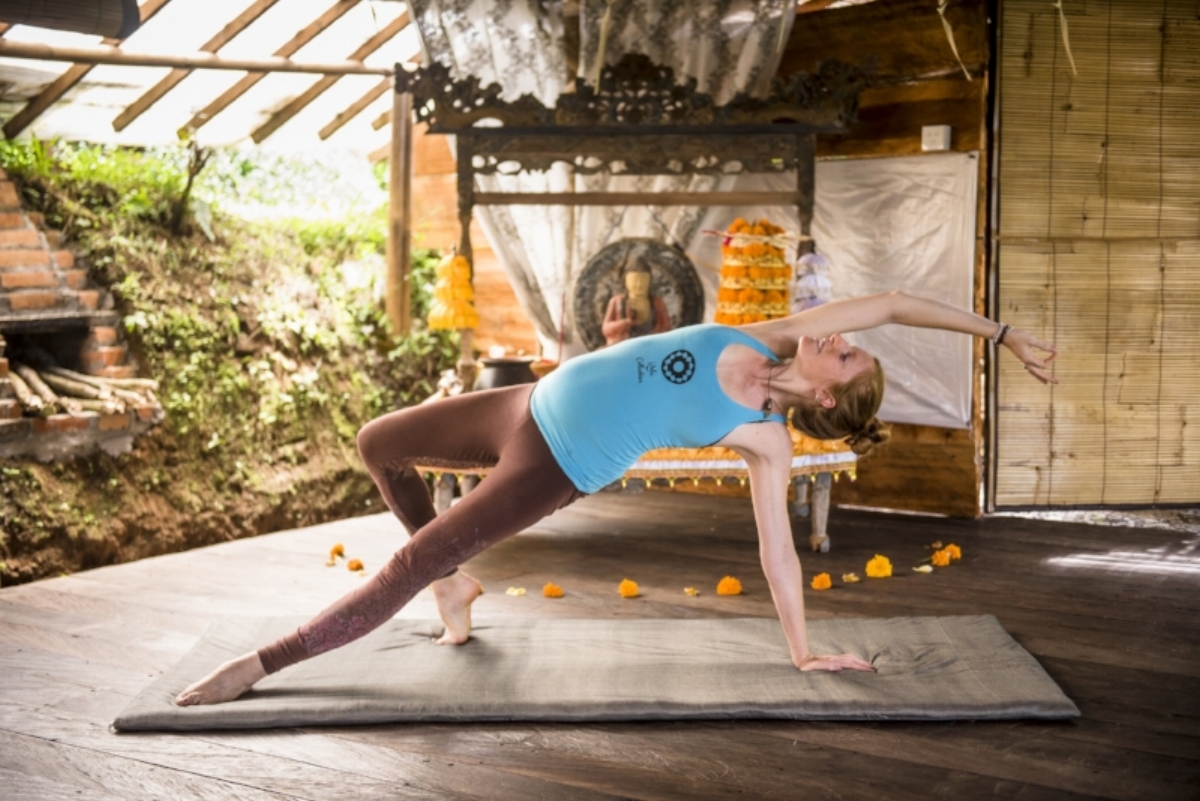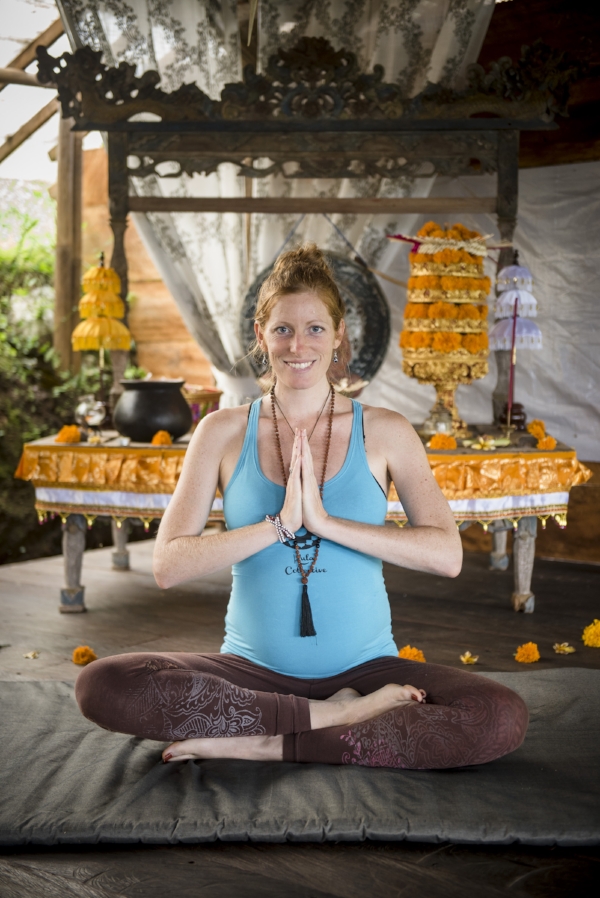Prenatal Yoga For SI Joint Pain: Causes, Symptoms & Exercises.
After sharing the exciting news of my pregnancy, a friend commented, “Being so connected with yoga and your body, you’re probably going to really feel all those changes happening inside of you!”
At the time, I didn’t realize how true that was. As I blissfully await the birth of our first son, I continue to explore the new shapes and abilities of my body. I’ve been blessed- skipping morning sickness and any other first trimester complications. And yet it was around four months, when my belly started to grow slightly that I found myself almost paralyzed with extreme lower back pain. I was already aware of my hyperlordosis - an over-curvature of the lumbar spine causing increased pressure and stress on the lower vertebrae - and how this can become even more pronounced as my belly grows. To mitigate this, I worked to continue strengthening the muscles of my lower back and focused on pointing my tailbone towards the ground. I gave myself permission to take frequent rests, but it didn’t get any easier.
I called several midwives, my massage therapist, and prenatal chiropractor. Finally someone asked, is this pain beginning in your lower back or deeper in the outside of your glutes? I tuned in and began to discern a dull throbbing pain originating near the base of my spine, and I soon identified the culprit of my pain as the SI (Sacro-Illiac) Joint area. A few days later, I couldn’t walk more than a few minutes without suffering from crippling shooting pain down my left leg. I began the journey of discovery and self-healing through yoga asana for my SI Joint area.
The SI joint is a mostly immobile sliding joint connecting the Sacrum and the Illium. On some people, you can see small dimples on either side of the base of the spine, near the top of the buttocks, and this is where the SI Joints reside. This joint allows for expansion of the pelvis for growth, weight gain, as well as pregnancy and giving birth.
Especially when quick weight gain occurs, the stable SI Joint can become unstable, causing tension in the muscles which surround it. The most notable muscle that is affected in this area is the piraformis. This is that deep muscle in the glutes that we love to stretch in pigeon pose or figure four. The piraformis is also the muscle that houses the roots of the sciatic nerve, which then extends down the outside of the thighs all the way to the base of the foot. So when the piraformis becomes agitated, we can sometimes feel that as both deep muscle pain as well as sharp shooting pain down the leg through the sciatic nerve.
Strengthening the muscles around the SI Joint prevents excess strain on the piraformis and agitation of the sciatic nerve - saving us from some very painful experiences. Conversely, stretching and over stretching these muscles can often cause more pain.
Needless to say, our whole body is an intricately connected as a holistic system, and we can equally look for holistic healing for our joints, muscles, and nervous system. Here are five tips to help with SI Joint issues for yourself or when designing a practice for your students:
1. Keep the pelvis in line!
When I first experience my lower back pain, I designed a morning asana practice comprised of pigeon pose variations and sukasana (sitting cross legged). I thought I needed to stretch these muscles more, but little did I know at the time, this actually exacerbated my SI Joint issues. Because the SI joint moves to open the pelvis, we actually want to counter that by maintaining the pelvis internally rotated and strengthening rather than stretching. Rather than sukasana, sit in hero’s pose with your knees parallel.
Avoid other poses that externally rotate the pelvis such as:
Triangle
Warrior 2
Deep lunges (you can practice a shorter stance to ensure a parallel pelvis!)
Goddess Pose or deep squats with externally rotated feet
2. Avoid Asymmetry & forward bends
Becoming aware of the rotation of your pelvis is so important in all practice. Any pose that takes your hips out of line (you can feel one hip in front of the other) should be avoided. This often means just backing off in poses, taking shorter stances, and not going so deep. Likewise, forward folks exacerbate pressure on the SI joint. Often only folding until your back is flat is enough (rather than a full forward fold with spinal contraction/your back is rounded). Use blocks or a wall to place your hands to ensure you have stability and support for your SI join in folds.
Try these variations:
Forward fold with a flat back, placing your hands on your thighs or on the wall
Standing wide leg forward fold with feet parallel with a short stance, folding against the wall or with a block or bolster for your hands
Pyramid pose with a short stance for a parallel pelvis and a block or wall for your hands
3. A Block is your best friend
The best way to strengthen the muscles around your pelvis is to place a block between your upper thighs - then squeeze it, keeping it in place while moving through some key poses. This internally rotates the pelvis, as well as strengthens your adductor muscles and other parts of your glutes. Use a block with:
Paschimotanasana (seated forward fold, not going beyond flat back or having a bolster for your head)
Tadasana (mountain pose)
Chair (try chair against a wall with the block too - a personal favorite!)
Legs up the wall (or in the air) *do not practice in your last month or two of pregnancy or if you find a shortness of breath
4. Strengthen, Strengthen, Strengthen
This isn’t about stretching, it’s about strengthening. We want to strengthen the muscles around your SI Joint so they have more ability to maintain support. Try these exercises:
Practice pelvic lifts into Bridge with a block between your thighs, do this very slowly 5-10 times. Be sure to maintain your hands on the earth for support rather than clasping them beneath your back
From kneeling with a block between your thighs, place your hands behind you pointing forwards (you can use a block if necessary) and lift your pelvis very slowly 5-10 times
Move from tadasana with a block between your thighs into chair and return to tadasana. Move slowly with your breath.
5. Try this asana sequence!
I’ve put together a full hour long class including many of these poses and exercises! This exact sequence is what healed my SI Joint issues. I went from not being able to walk to back into my full yoga practice doing this sequence for a few weeks.
We can heal ourselves!
Since a young age, Jessi has studied dance and creative movement. Since her first RYT200 teacher training in 2008, Jessi has led retreats and workshops throughout the States, Guatemala, Mexico, Peru, Colombia, and Costa Rica. She completed her RYT500 hour certification in 2012 and now leads teacher trainings in places she most enjoys to share.
Jessi teaches a Vinyasa based practice to combine elements of dance and natural movement with traditional yogic sequencing. She incorporates attention to rhythm of the breath, and allows for organic movement to flow in each pose. She is grateful for the journey of yogic creativity and loves to share this movement of bliss with others along the way.
To learn more about Jessi and see her upcoming yoga teacher trainings and retreats, click here.



